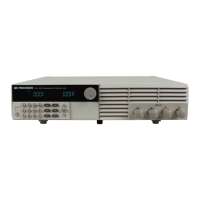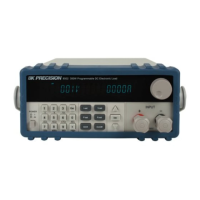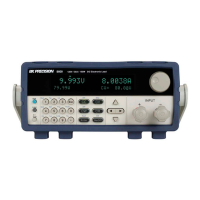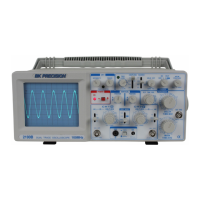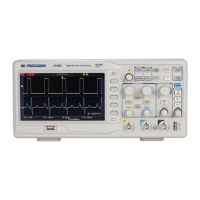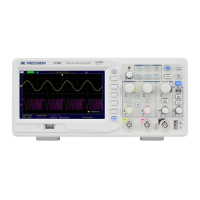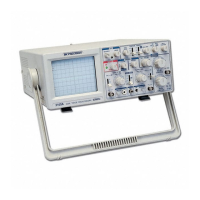Do you have a question about the BK Precision 8600 and is the answer not in the manual?
Defines safety category ratings for electrical energy and voltage impulses.
Describes the 8600 Series DC Electronic Loads and their applications.
Lists items included in the instrument's shipping carton.
Shows physical dimensions and rackmount compatibility.
Instructions for installing the instrument in a standard 19-inch rack.
Identifies and labels controls and indicators on the front panel.
Identifies and labels connectors and ports on the rear panel.
Explains the different parts and indicators on the instrument's display.
Details AC input voltage, frequency, and fuse specifications.
Steps to verify the correct AC input voltage is available.
Procedure to connect power and initiate the instrument's self-test.
Overview of the System and Config menus for instrument settings.
Lists options available within the System menu.
Lists options available within the Config menu.
Explains CC mode and how to configure its parameters.
Details parameters like Range, High/Low limits, and Rise/Fall time.
Details parameters like Range, High/Low current limits.
How to set the voltage turn-on state and its latch behavior.
Explanation of hardware and software OCP features and configuration.
How to enable or disable voltage auto range.
How to control current using external analog programming terminals.
Generates a pulse stream toggling between two load levels.
Generates a transient pulse of programmable width.
Switches between two levels upon receiving a trigger.
Sets the cut-off voltage level for the battery test to end.
Sets the capacity level for the battery test to end.
Sets a timer for the battery test to end.
How to simulate various tests, edit program files, and set Pass/Fail criteria.
Details on connecting via RS-232, GPIB, and USBTMC interfaces.
RS-232 pinout information and cable requirements.
FAQs and solutions for general operational issues like powering up.
Troubleshooting steps for remote communication issues.
Voltage, current, and power ratings for different models.
Specifications for Constant Voltage mode operation.
Specifications for Constant Current mode operation.
Specifications for Constant Resistance mode operation.
Specifications for Constant Power mode operation.
Defines safety category ratings for electrical energy and voltage impulses.
Describes the 8600 Series DC Electronic Loads and their applications.
Lists items included in the instrument's shipping carton.
Shows physical dimensions and rackmount compatibility.
Instructions for installing the instrument in a standard 19-inch rack.
Identifies and labels controls and indicators on the front panel.
Identifies and labels connectors and ports on the rear panel.
Explains the different parts and indicators on the instrument's display.
Details AC input voltage, frequency, and fuse specifications.
Steps to verify the correct AC input voltage is available.
Procedure to connect power and initiate the instrument's self-test.
Overview of the System and Config menus for instrument settings.
Lists options available within the System menu.
Lists options available within the Config menu.
Explains CC mode and how to configure its parameters.
Details parameters like Range, High/Low limits, and Rise/Fall time.
Details parameters like Range, High/Low current limits.
How to set the voltage turn-on state and its latch behavior.
Explanation of hardware and software OCP features and configuration.
How to enable or disable voltage auto range.
How to control current using external analog programming terminals.
Generates a pulse stream toggling between two load levels.
Generates a transient pulse of programmable width.
Switches between two levels upon receiving a trigger.
Sets the cut-off voltage level for the battery test to end.
Sets the capacity level for the battery test to end.
Sets a timer for the battery test to end.
How to simulate various tests, edit program files, and set Pass/Fail criteria.
Details on connecting via RS-232, GPIB, and USBTMC interfaces.
RS-232 pinout information and cable requirements.
FAQs and solutions for general operational issues like powering up.
Troubleshooting steps for remote communication issues.
Voltage, current, and power ratings for different models.
Specifications for Constant Voltage mode operation.
Specifications for Constant Current mode operation.
Specifications for Constant Resistance mode operation.
Specifications for Constant Power mode operation.
| Brand | BK Precision |
|---|---|
| Model | 8600 |
| Category | Test Equipment |
| Language | English |

